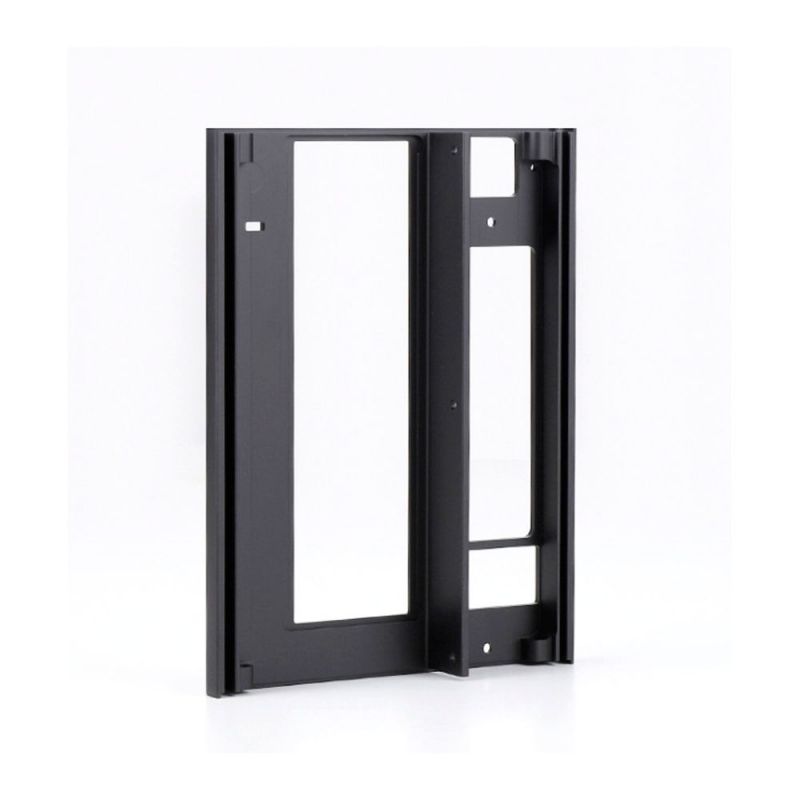What Makes Sheet Metal Stamping a Game-Changer for Manufacturing?
2024-12-19
In the world of manufacturing, the demand for precision, efficiency, and cost-effectiveness has never been higher. One technique that has emerged as a cornerstone in modern production is sheet metal stamping. But what exactly is sheet metal stamping, and why has it become such a game-changer for industries like automotive, electronics, and construction?
In this blog, we'll explore the process of sheet metal stamping, its advantages, applications, and why it has become an essential part of the manufacturing toolkit for companies across the globe.
What Is Sheet Metal Stamping?
Sheet metal stamping is a manufacturing process used to shape metal sheets into specific forms using a tool or die. The process involves applying high-pressure force to a flat sheet of metal, which is placed between two dies in a stamping press. The force causes the metal to conform to the shape of the die, creating the desired part or component.
Sheet metal stamping can be used for a variety of operations, including:
- Blanking: Cutting out the basic shape of a part from a metal sheet.
- Punching: Creating holes in the metal for mounting, screws, or other functions.
- Bending: Changing the shape of the sheet at specific angles.
- Embossing: Adding raised designs or patterns.
- Deep Drawing: Shaping a flat sheet into a deeper, three-dimensional form.
With its ability to create high volumes of consistent parts quickly and at a relatively low cost, sheet metal stamping is a vital process for many industries.
Why Is Sheet Metal Stamping So Important?
1. High Precision and Consistency
One of the primary reasons sheet metal stamping is a game-changer is its ability to deliver high precision. The process uses specially designed tools and dies, ensuring that each part is created with a high degree of accuracy. Whether it’s a complex part for the automotive industry or a simple bracket for electronics, sheet metal stamping delivers parts that meet tight tolerances consistently.
For industries where even the slightest deviation in part design can lead to malfunction or failure—such as in aerospace or automotive manufacturing—this level of consistency is crucial.
2. Cost-Effective for High-Volume Production
Sheet metal stamping is known for its cost-effectiveness, especially when producing high volumes of parts. Once the initial tool and die are created, the process is highly automated, allowing for rapid production with minimal labor costs. The ability to produce large quantities of parts quickly at a lower per-unit cost makes it an ideal choice for industries that require mass production, such as automotive or consumer electronics.
Additionally, sheet metal stamping reduces material waste compared to other manufacturing methods, further lowering costs. It’s an efficient way to produce parts that meet the quality and durability requirements without compromising on the bottom line.
3. Flexibility in Material Types
Another key advantage of sheet metal stamping is its versatility when it comes to materials. A wide range of metals can be used, including:
- Steel (mild steel, stainless steel, galvanized steel)
- Aluminum
- Brass
- Copper
- Titanium
This flexibility allows manufacturers to choose the best material for the intended application, considering factors such as strength, weight, corrosion resistance, and conductivity. For example, in the automotive industry, steel and aluminum are commonly used due to their balance of strength, weight, and cost. Meanwhile, in the electronics industry, copper might be used for its excellent conductivity.
4. Rapid Production Speed
In industries where time is a critical factor, sheet metal stamping offers an advantage with its rapid production speed. The automated nature of the process allows manufacturers to produce large quantities of parts in a short period. For instance, a high-speed stamping press can produce hundreds or even thousands of stamped parts per hour, significantly speeding up the production timeline compared to traditional manufacturing techniques.
This is particularly important for industries like automotive and consumer electronics, where there is often a need to meet high demand for parts or components quickly.
5. Durability and Strength of Parts
The durability and strength of parts produced by sheet metal stamping are also key reasons for its popularity. Metal parts produced using stamping processes are often stronger and more durable than those made from plastic or other materials. The process itself can improve the material’s mechanical properties, particularly when it involves techniques like deep drawing or embossing, which can strengthen the metal.
In industries such as automotive manufacturing, where parts need to withstand high stress and extreme conditions, stamped metal components offer the required level of strength and longevity.
6. Design Flexibility
Sheet metal stamping allows for a high level of design flexibility. Manufacturers can create parts with intricate geometries, shapes, and features, which might be difficult or expensive to achieve using other processes. Whether it's a simple bracket or a complex part with multiple bends, holes, or embossed features, sheet metal stamping can meet a wide variety of design needs.
Moreover, the ability to use multiple dies in a single stamping process means that multiple features can be integrated into one component, reducing the need for additional manufacturing steps.
Common Applications of Sheet Metal Stamping
The versatility of sheet metal stamping has led to its widespread use across many industries. Some of the most common applications include:
1. Automotive Industry
In the automotive sector, sheet metal stamping is used to create a variety of parts, including:
- Body panels (such as doors, fenders, and hoods)
- Structural components (frames, chassis parts, reinforcements)
- Interior parts (brackets, supports, trim pieces)
The ability to produce high-strength, lightweight components at a low cost makes sheet metal stamping crucial for the mass production of vehicles.
2. Electronics Industry
In electronics, sheet metal stamping is used to manufacture components like:
- Casing for electronics (such as smartphones, computers, and appliances)
- Connectors and terminals
- Heat sinks and electrical shielding
The high precision and cost efficiency of stamping make it ideal for producing small, intricate components in the consumer electronics industry.
3. Aerospace and Defense
The aerospace and defense industries also rely on sheet metal stamping to produce durable parts with exacting standards. Applications include:
- Aircraft components (such as brackets, wings, and landing gear)
- Defense parts (including components for vehicles, weapons, and avionics)
The strength and reliability of stamped parts are crucial in these industries, where failure can result in significant safety risks.
4. Medical Devices
In the medical industry, precision and reliability are key. Sheet metal stamping is used to create:
- Surgical instruments and medical devices
- Enclosures for medical equipment
- Implants and prosthetics
The high degree of precision in sheet metal stamping ensures that parts meet strict regulatory standards and function as intended in medical applications.
5. Consumer Goods
From appliance parts to home electronics, sheet metal stamping is widely used to produce the metal components found in consumer goods. These parts may include:
- Frames for televisions, refrigerators, and microwaves
- Mounting brackets and structural components for other home appliances
Conclusion: Why Sheet Metal Stamping is a Game-Changer
So, what makes sheet metal stamping a game-changer for manufacturing? The combination of precision, cost-efficiency, material flexibility, and rapid production speeds makes it an indispensable tool for industries ranging from automotive to electronics and aerospace. With its ability to produce high-quality, durable parts at scale, it’s clear why sheet metal stamping is such a vital part of the modern manufacturing landscape.
Whether you're working on mass production, prototyping, or designing components for critical applications, sheet metal stamping offers the reliability and efficiency required to get the job done right. If you're not already using sheet metal stamping in your production processes, now might be the time to consider how this powerful technique could enhance your manufacturing capabilities.



